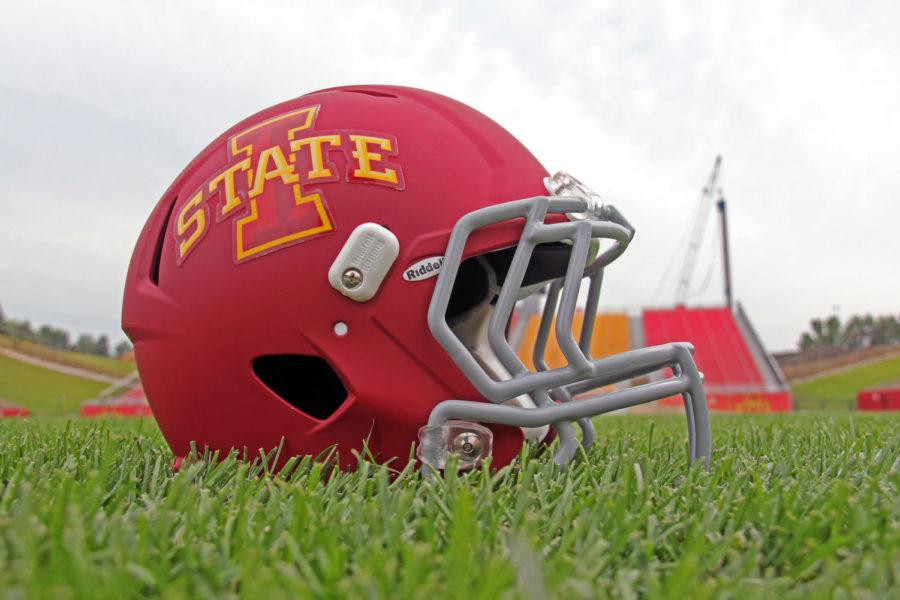Moran: Contact sports improve safety precautions despite media reports
The new matte helmets for the 2014-15 football season were introduced during the football media day took place Aug. 10 at Jack Trice Stadium and Bergstrom Football Complex.
October 7, 2015
Every snap, every down and every play could be the last for any football player.
Safety has always been a major concern in such an active and physical sport, especially when it comes to head injuries and the technology that goes into the equipment to protect players.
Concussions, torn muscles and broken bones are just a few of the injuries an athlete can experience when playing football at any level. These injuries can also range from minor to life-long.
Mike Utley was an offensive linemen for the Detroit Lions from 1989 to 1991. A promising young star’s career in the NFL was destroyed during a game against the St. Louis Rams in his third season. Utley injured his sixth and seventh vertebrae and was paralyzed from the chest down.
An occurrence this severe is rare, but it shows the risks that exist as a football player.
So can we safely say football isn’t safe? Yes, football isn’t completely safe and that can be said about any contact sport.
I was ready to write an article about how I believe football has become increasingly dangerous in the past few years, but after doing some research, my views on the matter have changed.
The NFL, which stands for the National Football League, is the leading football league in the world. It is constantly updating rules and taking steps to improve player safety.
The Bleacher Report recently posted an article about former NFL wide receiver Plaxico Burress, who said lighter helmets are actually causing more health concerns, primarily concussions, in the NFL.
On the surface, this seems logical. A lighter helmet would be more likely to cause head injuries, but this isn’t actually the case.
No connection has been made between the type of helmets worn by players and concussions. Additionally, a study by UW Health found no correlation between the type of helmet and the age of the helmet.
Likewise, the 2015 NFL Health and Safety Report confirmed that contrary to Burress’ beliefs, concussions have actually decreased in the past few years.
ESPN also released an article that said concussions were down 25 percent and have been decreasing steadily. A total of 111 concussions were reported in the 2014 regular season, while 148 were reported in 2013 and 173 in 2012.
Ironically, Chris Borland, a former linebacker for the San Francisco 49ers, retired after only one year in the league. ESPN released a full article, but in short, he retired in fear of long-term head trauma.
The NFL has also worked to update rules and safety policies to maintain the health of its players.
Medical timeouts were some of the most recent updates to the league’s policies. This rule states that if a player seems unstable or could possibly need medical attention, the game will pause, and the player will be removed from the field for a medical evaluation. Neither team will be charged a timeout.
Each player is also has pads, a helmet and a mouthguard to increase safety during each play. All of these should be worn at all times to maintain player safety.
Rules like these are enforced throughout football organizations and clubs to prevent injuries, and football has actually become just as safe as band or choir, according to a 2012 Mayo Clinic study.
So, is football completely safe? No, players always take the risk of getting injured when participating in a contact sport, but it has become incredibly safe despite media sensationalism. Through the use of pads, safety policies and medical procedures, football clubs and organizations are working to keep players’ injury prevention at the forefront of the conversation in the athletic world.

















